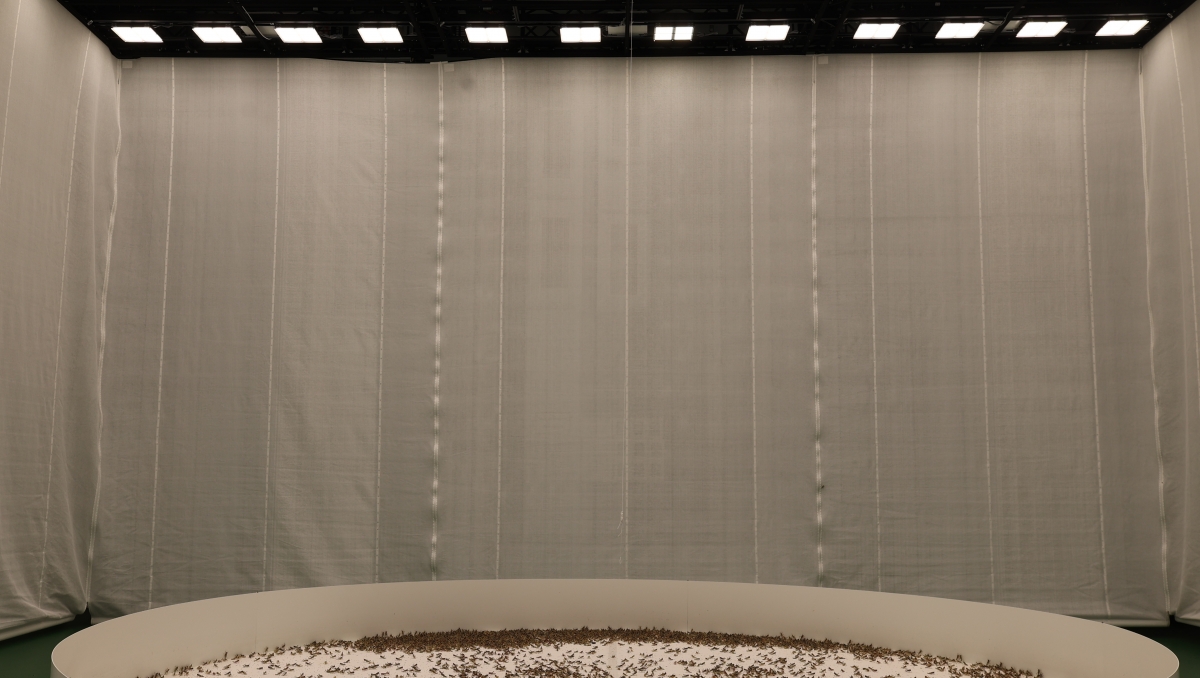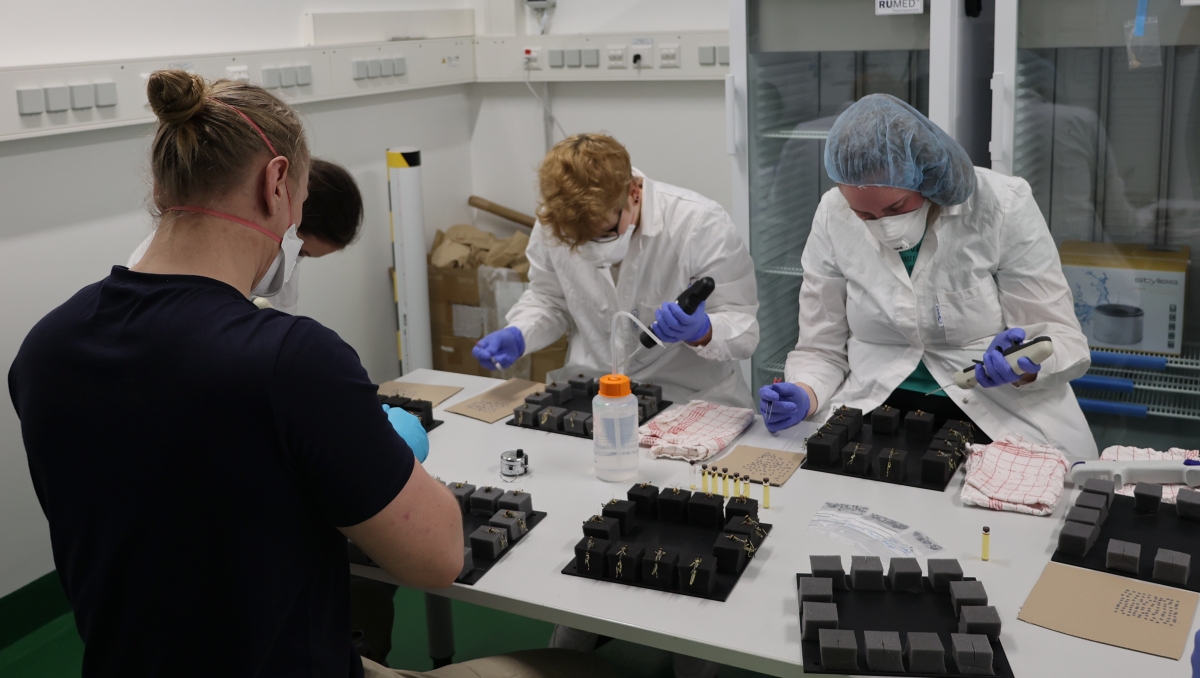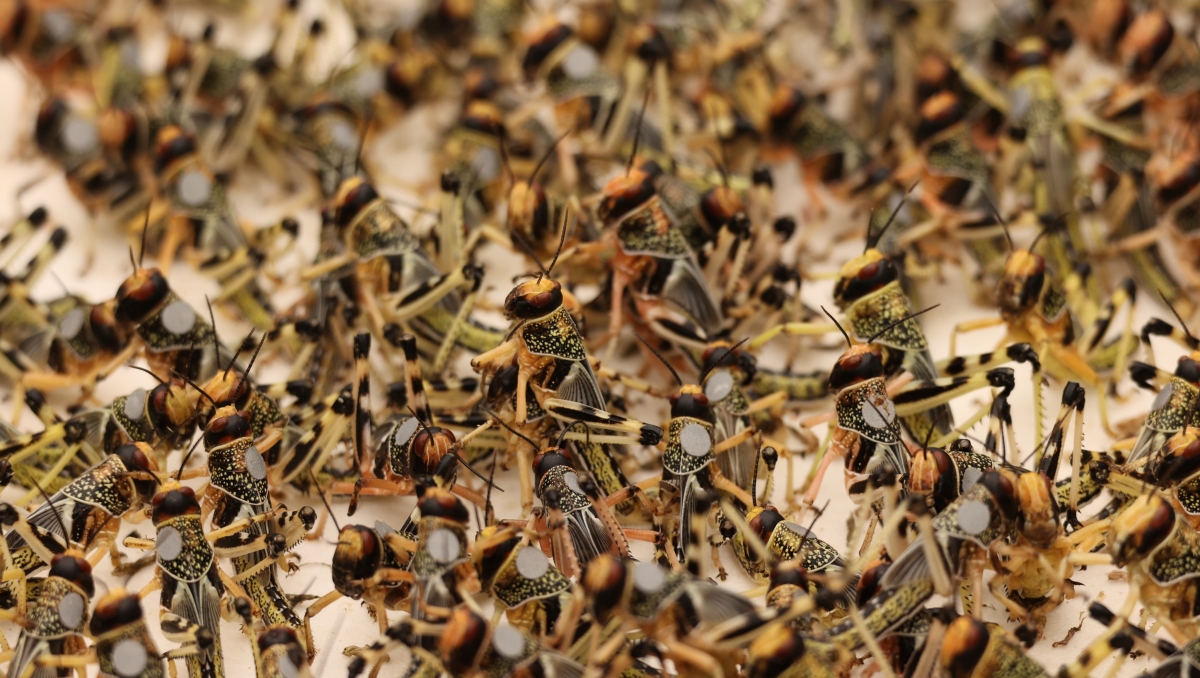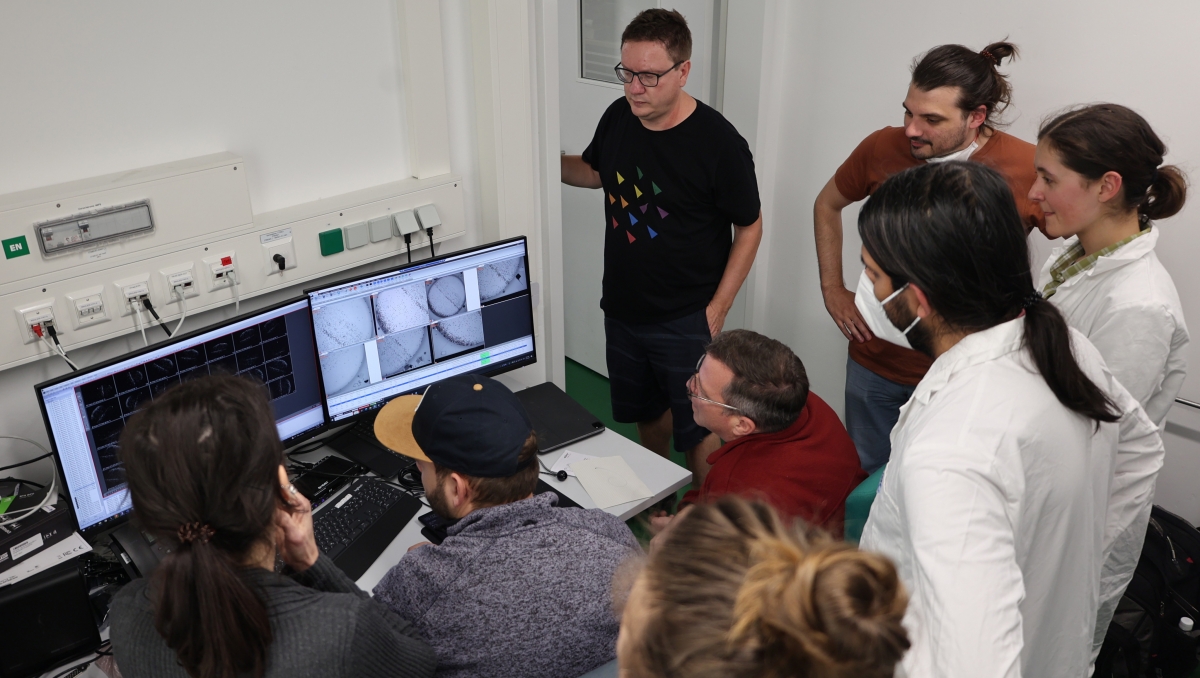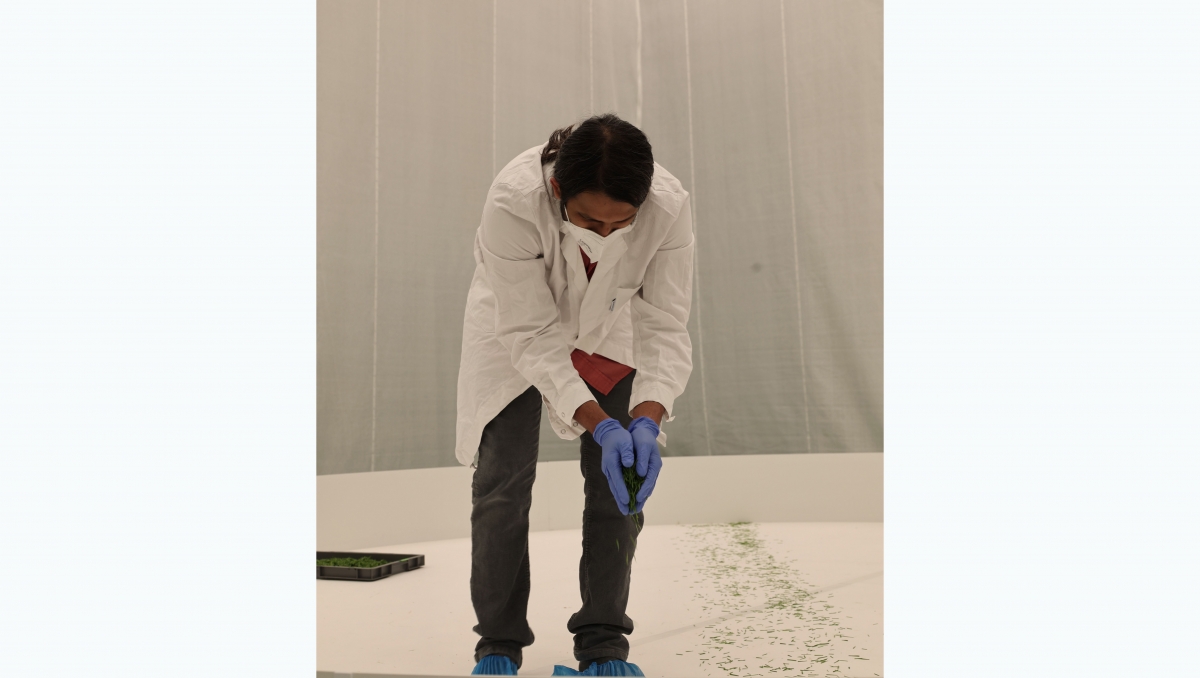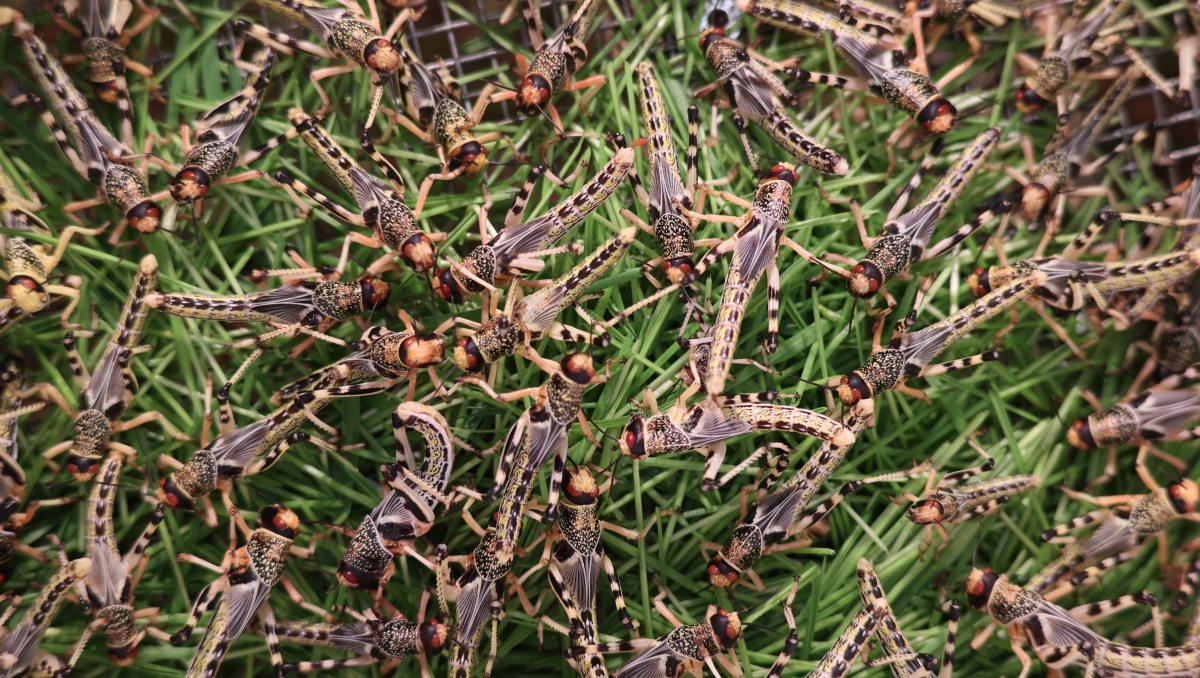10,000 locusts tracked
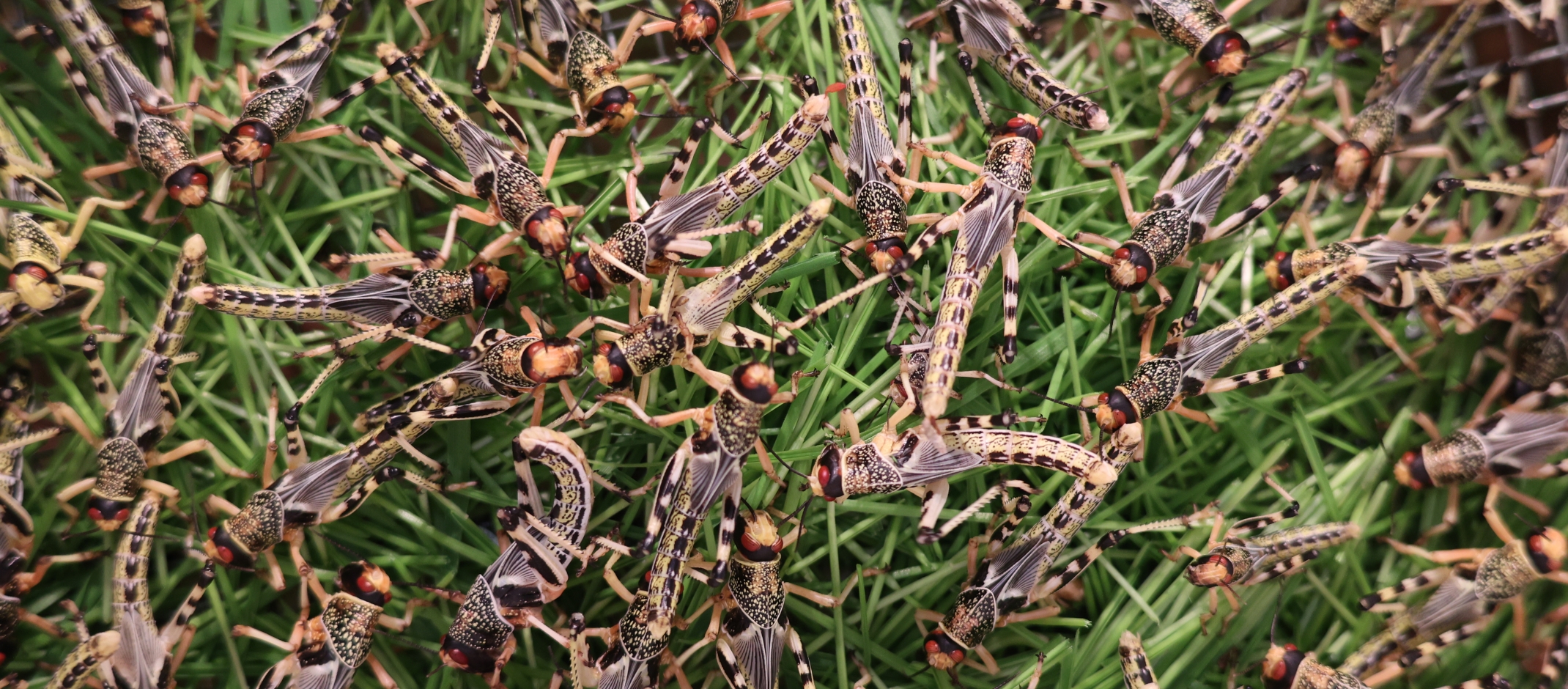
60,000 locust feet march from left to right and right to left in the arena. The Imaging Hangar, the largest laboratory at the University of Konstanz, is filled with the tapping sound of the locusts. The involved researchers sit in an excited atmosphere in the control room next door.
"No doubt a highlight of my career."
Iain Couzin
Iain Couzin, the speaker of the Cluster of Excellence Centre for the Advanced Study of Collective Behaviour (CASCB) at the University of Konstanz and the director of the Max Planck Institute of Animal Behavior leads the overall project. The researchers follow the movements, organization, and dynamics of these locusts and aim to understand the foraging behaviour in different food distributions and the communication in the swarm when in danger.
The experiment is unique due to the quantity and the technology used. As the scientists from the Cluster of Excellence CASCB at the University of Konstanz and the Max Planck Institute of Animal Behavior say, there has been no comparable experiment up until now. Experiments in the lab used around 100 animals so far.
https://www.youtube.com/watch?v=nfYTK1Ndhw4
Start of the project
On Monday 27 March 2023, early in the morning, 15 researchers, animal caretakers, and student assistants stand in front of the Imaging Hangar wearing white lab coats, masks, and hairnets. The technical assistant Jayme Weglarski, clipboard in hand, briefs the team about the day’s agenda. She has been coordinating the experiments since nearly a year now. After the discussion, they get the locusts out of the animal holding via small transport boxes. Approximately 4,000 animals get tagged with tiny, reflecting markers. A motion capture system registers these markers while the animals move around the 5-meter-wide arena with a circumference as long 375 locusts body length. This setup allows the researchers to track each locust's location and individual movement patterns. The first 2,000 locusts are tagged with the markers after just three hours – a taskwork from the team that worked hand in hand.
How do groups organize?
The first experiment begins at around 11 am: “In my experiments, I am interested in long observations of unobstructed marching. I monitor the organization and dynamic of big groups”, explains postdoc Luke Costello from the Max Planck Institute of Animal Behavior. The locusts will move around undisturbed for six hours daily throughout the week. Compared to previous experiments, the increased group and arena sizes allow the observation of naturalistic group formation and marching under unprecedented conditions. On the first day, the team observes the marching of 2,000 animals, on the second day 4,000 locusts, and on days three through five they monitor 10,000. “I was surprised by how significant a role density seemed to play for marching”, says Luke Costello. “In smaller groups a rotation in a circle has occured. In the case of 10,000 animals we saw the formation of “hopper bands”, the type of dense mobile phalanx of locusts that has only been seen in the wild before.”
https://youtu.be/KRIBVykhpC4The British YouTuber Tom Scott took part in the experiment and published this video about it on 17 April 2023.
Doctoral student Yannick Günzel from the Cluster of Excellence CASCB uses the Imaging Hangar around 5 pm. He studies how locally available information travels within the group and how individual decisions scale up to swarm dynamics. An example of this is how a new piece of information – for example a discovered food source or a danger – is passed on within a swarm. “The sheer size of the imaging hangar alone allows us to formulate entirely new hypotheses about locust swarms, as well as test predictions from virtual reality experiments,” says Günzel.
How do 10,000 locusts behave during foraging?
No activity of the animals remained unobserved. At the end of each day, the team studied even the locusts' collective feeding strategies on a larger scale than ever in a laboratory. Vishwanath Varma, postdoc at the Cluster of Excellence CASCB, explains his experiment: “We were interested in understanding how locusts forage in environments with different distributions of food so that we may predict locust movements in the field.” In one experiment, he spread bits of grass evenly over one part of the arena and released the locusts from the other side. They placed dense clumps of grass in four corners of the arena and let the locusts go foraging in another experiment. “We observed band formations when we distributed the food evenly, and the arc-like shapes of the band also resembled those observed in natural settings. When we concentrated the food in patches, we observed switching dynamics between patches. These dynamics are harder to observe in the field”, Varma summarizes the first findings.
Data evaluation and analysis
After the experimental period, the interdisciplinary research team of biologists and computer scientists is now tasked with evaluating and interpreting the data, followed by writing publications. The curious researchers will compare the observations from the laboratory with those from nature, for example, during field work in Kenya in 2020.
The joy from the successful experiment week can still be felt:
Luke Costello adds: “It was great! The Imaging Hangar is a unique facility, and it’s been awesome to be a part of some of the first experiments in there.”“Just dealing with the scale of the experiments – the numbers of animals, the size of the arena, the arrays of lights and cameras – was a unique experience.”
Vishwanath Varma

